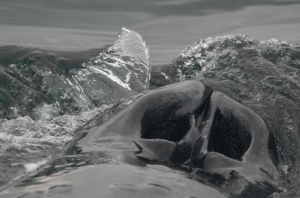Most everyone on the planet knows what a dolphin is and what they look like. Dolphins are incredibly popular animals and just happen to be one of the most charismatic of all marine mammal species. But you may not have known that dolphins belong to an order of species that encompasses many of our favorite mammalian relatives. This is the order Cetacea that contains both baleen whales as well as toothed whales, which is the one our familiar dolphins are a part of. Today we are going to talk about some differences between baleen whales and toothed whales and how we can identify what makes a dolphin a dolphin.
 First off lets talk about baleen whales and toothed whales. The baleen whales scientific sub-order is officially called Mysticeti and contains whales such as blue whales, gray whales, and humpback whales. The toothed whales scientific sub-order is officially termed Odontoceti and contains whales like porpoises, orca whales, and of course dolphins! There are many similarities between the two sub-orders such as they both give live birth, have blowholes, and use sounds to communicate with each other, as well as many others. However, there are some glaring differences between the two that allow us to really define what a dolphin exactly is.
First off lets talk about baleen whales and toothed whales. The baleen whales scientific sub-order is officially called Mysticeti and contains whales such as blue whales, gray whales, and humpback whales. The toothed whales scientific sub-order is officially termed Odontoceti and contains whales like porpoises, orca whales, and of course dolphins! There are many similarities between the two sub-orders such as they both give live birth, have blowholes, and use sounds to communicate with each other, as well as many others. However, there are some glaring differences between the two that allow us to really define what a dolphin exactly is.
The first major difference is that Mysticetes use baleen, (large overlapping plates used to filter feed), to eat small organisms like krill. Odontocetes swallow their prey whole and use their teeth for grabbing and gripping instead of chewing.
 Secondly, Mysticetes are also mostly solitary animals only coming together for mating or when food is plentiful in a given spot whereas most Odontocetes, especially dolphins shown above, travel in pods. Thirdly, Odontocete jaws are much more asymmetrical (different on either side of the jaw) than Mysticetes so that they can receive sound waves from echolocation much better while they are feeding and locate their prey. Fourthly, sounds made by these two are different; Mysticetes produce much lower frequency songs to navigate and communicate whereas Odontocetes produce many more high frequency clicks and whistles used to locate prey on top of communication and navigation. Fifthly, Mysticetes have double blowholes (shown to the right) while Odontocetes have single ones. And lastly is their size! Odontocetes, with the exception of sperm whales, are generally much smaller than their Mysticete relatives. So, if you see a smaller marine mammal producing high frequency clicks, breathing through a single blowhole, eating larger prey like fish and squid, and smaller in size chances are it’s a dolphin!
Secondly, Mysticetes are also mostly solitary animals only coming together for mating or when food is plentiful in a given spot whereas most Odontocetes, especially dolphins shown above, travel in pods. Thirdly, Odontocete jaws are much more asymmetrical (different on either side of the jaw) than Mysticetes so that they can receive sound waves from echolocation much better while they are feeding and locate their prey. Fourthly, sounds made by these two are different; Mysticetes produce much lower frequency songs to navigate and communicate whereas Odontocetes produce many more high frequency clicks and whistles used to locate prey on top of communication and navigation. Fifthly, Mysticetes have double blowholes (shown to the right) while Odontocetes have single ones. And lastly is their size! Odontocetes, with the exception of sperm whales, are generally much smaller than their Mysticete relatives. So, if you see a smaller marine mammal producing high frequency clicks, breathing through a single blowhole, eating larger prey like fish and squid, and smaller in size chances are it’s a dolphin!
Kopelman, A. H. (n.d.). CETACEANS. Retrieved October 27, 2016, from http://www.cresli.org/cresli/cetacean/cetapage.html


